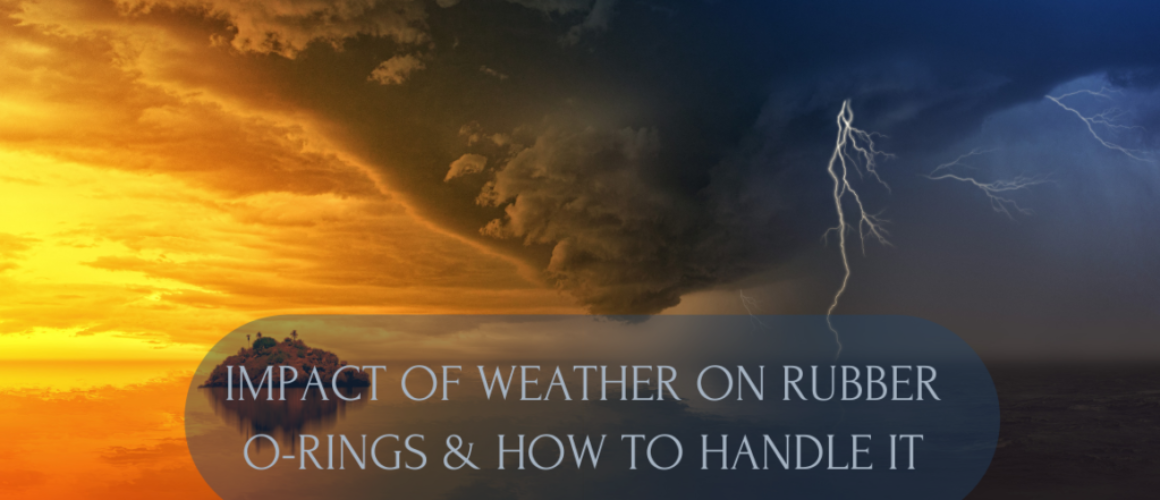Impact of Weather on Rubber O Rings & How to handle it
Impact of Weather on Rubber O Rings
Environmental conditions play a vital role in rubber o-rings functioning. Almost all o-rings are durable and are best suited to environmental changes but the effects of rain, temperatures, ice, ozone, and UV light impact shown in the performance of o-rings. The impact of these environmental changes must be taken into consideration when you are deciding to order rubber o-ring seals. The right choice of material can reduce failure in your valuable industrial applications.
Impact of Heat on Rubber O-Rings:
Rubber o rings have to face commonly two types of temperatures high and low. At the high-temperature rubber, elastomers can destroy quickly because temperature change could be caused by chemical changes over a long period of time. These changes can not be reversed by nature in cool temperatures. These chemical changes are irreversible and can be the cause of elastomer failure by affecting its strength and integrity.
For specific high operating temperatures O-ring materials are as follows:
- Nitrile − – 30°C to +120°C (-22°F to +248°F)
- Hydrogenated Nitrile (HNBR) − -30°C – 150°C ( -22°F to 302°F)
- Silicone rubber − -60°C to 250°C (−76°F to 482 °F)
- Polyacrylate− – 160°C to 210 °C(320°F to 410 °F)
Impact of Cold on Rubber O-Rings:
Cold weather highly impacts rubber elasticity, which can affect its compression set, in the cold temperature it becomes harder and less flexible, and it can become brittle and break off. As we know that once the compression set worsens it can’t go to its original size due to some chemical changes. That can cause the rubber part to deteriorate.
For specific low operating temperatures O-ring materials are as follows:
- Nitrile − -30°C to +120°C (-22°F to +248°F)
- HNBR − -30°C – 150°C ( -22°F to 302°F)
- Silicone rubber − -60°C to 250°C (−76°F to 482 °F)
- FFKM− -42°C to +220°C (−43.6°F to 428 °F)
Impact of Water on Rubber O-Rings:
When we use rubber seals to prevent leakage in high water-moisture-humidity, fluids, ironically, or rainy weather it can show some swelling problems that can lead to the failure of this rubber seal. As the same, temperature, and water also affect rubber’s chemical properties. It changes the size between the seal and gland; it makes these o-rings incompatible with the system environment and malfunctions.
For Specific Wet, Rainy or Humid Environment Environments Operating O-ring materialsare as Follows: EPDM, NBR, and Silicone.
Impact of O-Zone on Rubber O-Rings:
Ozone gas (O3) is a highly reactive gas composed of three oxygen atoms. It is derived from oxygen and is found throughout the earth’s atmosphere. Ozone exposure is usually caused by electrical arcing, ultraviolet light, and electromagnetic fields which is common in many manufacturing and industrial environments. Before installation, We need to store O-rings away from electrical equipment or motors and should be kept in a dark room that is away from direct sunlight. In these applications where long-term ozone exposure is high, use ozone-resistant materials O-rings such as EPDMor Fluorocarbon.


